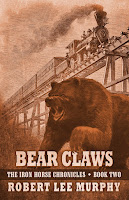[This
is adapted from an excerpt of my book You
Can Write for Children: How to
Write Great Stories, Articles, and Books for Kids and Teenagers.]
It's
tempting for authors of historical fiction to go on at length about the time
and place where their book is set. After all, it's fascinating to them, and they did all that research!
But for readers, especially children who may not have a particular interest in
the era portrayed, daily life should be shown in action instead of pausing the
story to explain the history.
Life
has gotten more fast-paced, from TV shows and movies to daily activities, which
may be why some older historical novels don't hold up as well. They're too much
about the history, and not enough about a great story. In general, readers
don't care as much about setting as they care as plot and characters. Still, a
strong setting can provide an interesting backdrop for a story and teach young
readers about a different part of the world or the different way some people live
(or lived).
Young
readers will typically enjoy books best if the setting serves as a backdrop
rather than being described in enormous detail. For my Egyptian mystery, The Eyes of Pharaoh, I tried to weave in
details without stopping the plot. The book opens like this:
Seshta
ran. Her feet pounded the hard-packed dirt street. She lengthened her stride
and raised her face to Ra, the sun god. Her ba, the spirit of her soul, sang at
the feel of her legs straining, her chest thumping, her breath racing.
She
sped along the edge of the market, dodging shoppers. A noblewoman in a
transparent white dress skipped out of the way and glared.
In
just a few lines, readers learn the setting (dirt street, market), cultural
details (noblewoman), and religious references (Ra, the ba). But they are all
conveyed within the action, as the main character races toward her goal.
On
occasion, historical fiction writers may want to show an unfamiliar attitude. This
can require a bit more explanation. For example, in my Mayan historical drama, The Well Sacrifice, the narrator
describes her sister like this: “Feather was beautiful even as a child.... Her
dark, slanting eyes were crossed, and her high forehead was flattened back in a
straight line from her long nose.” This shows the different Mayan
interpretation of beauty. Otherwise, a physical description of Feather might
have convinced young readers that she was ugly, rather than beautiful by the
standards of her time.
Still,
to be true to the time and the characters, historical fiction writers have to
trust their readers to notice and interpret shown details. In The Well Sacrifice, I couldn’t explain
that the Maya didn’t have wheeled vehicles, since the Mayan narrator wouldn’t
be aware of what her culture did not have. I could only show them traveling by
foot or canoe. (An author’s note at the end of the book also pointed out this
details. Teachers also may be able to find supplemental material posted on the
author’s website, such as I have
here. Finally, pairing historical fiction and nonfiction can be a great way
to get readers interested in the culture because of the story, while learning
facts through the nonfiction.)
My
philosophy is that people in the past were much the same as people today in
most ways – they were motivated by fear, love, pride, faith, and so forth.
Readers can connect to these motivations and emotions even if the specific situations
are different. That's why young readers can fall in love with books set during
the Civil War, such as Jennifer
Bohnhoff’s The Bent Reed, or on
Java when Krakatoa erupts, such as Sara K Joiner’s
After the Ashes. To them, Suzanne
Morgan Williams’ novel Bull Rider, set only a few years ago, is as
historical as Robert
Lee Murphy’s The Iron Horse Chronicles, set during the westward
expansion of the US, or my novels set in the ancient past. Kids can enjoy time
travel novels such as Louise
Spiegler’s The Jewel and the Key, set in Seattle both in contemporary
times and at the beginning of World War I. Depending on the child, both
settings may be equally exotic.
Chris Eboch writes fiction and nonfiction for all ages, with
several novels for ages nine and up. The Eyes of Pharaoh is an
action-packed mystery set in ancient Egypt. The Genie’s Gift draws on the
mythology of 1001 Arabian Nights to take readers on a
fantasy adventure. In The Well of Sacrifice, a Mayan girl
in ninth-century Guatemala rebels against the High Priest who sacrifices anyone
challenging his power. The Haunted series,
which starts with The Ghost on the Stairs, follows a
brother and sister who travel with their parents’ ghost hunter TV show and try
to help the ghosts while keeping their activities secret from meddling
grownups.
Chris's writing craft books include You
Can Write for Children: How to
Write Great Stories, Articles, and Books for Kids and Teenagers and Advanced Plotting. Learn more at www.chriseboch.com or her Amazon page. Sign
up for her author newsletter for news and
special offers.







No comments:
Post a Comment